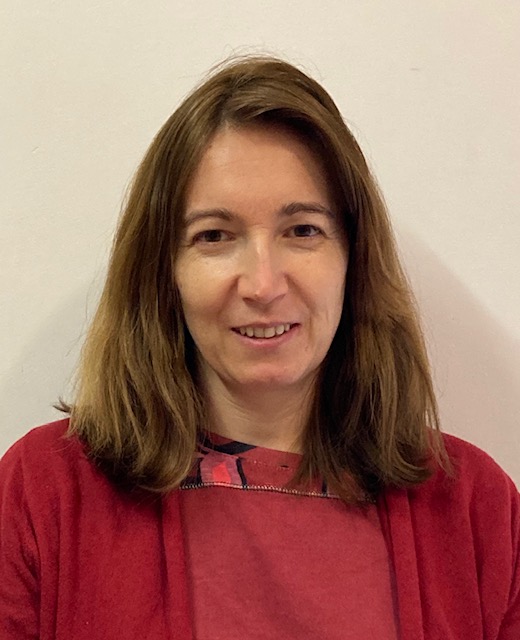Prof. Dr. Zsuzsanna Benyóné György - MATE Research
Overview
Zsuzsanna Benyóné György is a university professor at the Department of Plant Biotechnology, Institute of Genetics and Biotechnology. She served as secretary (2018-2024) and now serves as chair (2024-) of the Subcommittee of Medicinal plants within the Committee on Horticulture and Food Sciences, Section of Agricultural Sciences, Hungarian Academy of Sciences.
Her research focuses on the application of various molecular marker technologies for studying the genetic diversity of medicinal plants and fruit species. She is also deeply engaged and made significant contributions to the research concerning the genetic background of the glycoside biosynthesis of a medicinal plant, Rhodiola rosea. Her work also contributes to the field of entomology by identifying cryptic insect species through molecular barcodes.
Across her research, she uses in vitro plant cell-based techniques, methods of molecular genetics, and bioinformatics.
She authored and co-authored two and 12 research articles in high-impact D1 and Q1 ranked scientific journals, respectively, seven in Q2 journals and a total of ten additional papers in Q3 or Q4 journals.
Prof. György has collaborated with four research groups across Europe/worldwide, such as research groups from Norway, Finland, Switzerland, Spain and she has successfully applied for six research grants nationally and internationally. She won the prestigious Bolyai scholarship awarded by the Hungarian Academy of Sciences (2014) and earned “outstanding” rating.
She served as guest editor of the special issue of Agriculture with the title “Genetic diversity of medicinal and aromatic crops” (2022).
Research keywords:
Publications
György, Z., Jaakola, L., Neubauer, P., Hohtola, A. Isolation and expression analysis of a Rhodiola rosea tyrosine decarboxylase cDNA. 2009 JOURNAL OF PLANT PHYSIOLOGY 166 (14): 1581-1586 Elsevier IF 2,500, Q1 DOI: 10.1016/j.jplph.2009.03.016
Halász, J., Hegedűs, A., György, Z., Pállinger, É., Tóth, M. 2011 S-genotyping of old apple cultivars from the Carpathian Basin: methodological, breeding and evolutionary aspects. TREE GENETICS AND GENOMES 7 (6): 1135-1145. Springer Nature IF 2,335, Q1 DOI: 10.1007/s11295-011-0401-7
György, Z., Tóth, E.G., Incze, N., Molnár, B., Höhn, M. Intercontinental migration pattern and genetic differentiation of arctic‐alpine Rhodiola rosea L.: A chloroplast DNA survey. 2018 ECOLOGY AND EVOLUTION 8:11508-11521. Wiley-Blackwell Publishing Ltd. IF 2,34, D1 DOI: 10.1002/ece3.4589
Mirmazloum, I., Kiss, A., Ladányi, M., György, Z. Production of Cinnamyl Alcohol Glycosides by Biotransformation in Roseroot Callus Cells.
2019 PLANT CELL, TISSUE AND ORGAN CULTURE 139: 29–37 IF 2,200, Q1 DOI: 10.1007/s11240-019-01659-7
Mirmazloum, I., Ladányi, M., Beinrohr, L., Kiss-Bába, E., Kiss, A., György, Z. Identification of a novel UDP-glycosyltransferase gene from Rhodiola rosea and its expression during biotransformation of upstream precursors in callus culture. 2019 INTERNATIONAL JOURNAL OF BIOLOGICAL MACROMOLECULES, 136:847-858. IF 4,784, Q1 DOI: 10.1016/j.ijbiomac.2019.06.086.
Projects
Investigation of the genetic background of the glycoside biosynthesis in roseroot
The project focused on isolating and characterizing the genes involved in the biosynthesis of the glycosides of Rhodiola rosea. The studied genes were: phenylalanine ammonia lyase, hydroxycinnamate:CoA ligase, cinnamyl-CoA reductase, cinnamyl alcohol dehydrogenase, tyrosine decarboxylase and UDP-glucosetransferase. Besides this a Rhodiola rosea DNA collection was established and the genetic diversity of the samples was assessed. The samples were collected from the whole of Europe, all together 369 individuals from 19 populations.
http://nyilvanos.otka-palyazat.hu/index.php?menuid=930&num=83728
Analysis of biosynthetic pathways that lead to the glycoside production of Rhodiola rosea
The project continues the previous project. Transcriptome sequencing and whole genome sequencing have been performed, to reveal the sequence of the earlier identified genes. The expression of those has been studied. Precursor feeding experiments have been performed on in vitro grown plants.
http://nyilvanos.otka-palyazat.hu/index.php?menuid=930&num=128793
Background and regularities of accumulation of phenolic compounds in medicinal plants
The project aimed to examine the effect of both biotic (intraspecific variety, ontogenesis, organic differentiation) and abiotic (water supply) influencing factors and the genetic background of chemical changes on aromatic plants. As model species, thyme and lemon balm have been chosen. Significant reduction of the studied morphological features and biomass have been registered due to a limited water supply and the rate of these was similar in the two species. These changes were not always in connection with the changes in active compounds. Intraspecific chemical variability of lemon balm concerning phenolic ingredients seems to be low while that of the thyme is significant.
http://nyilvanos.otka-palyazat.hu/index.php?menuid=930&num=108633





